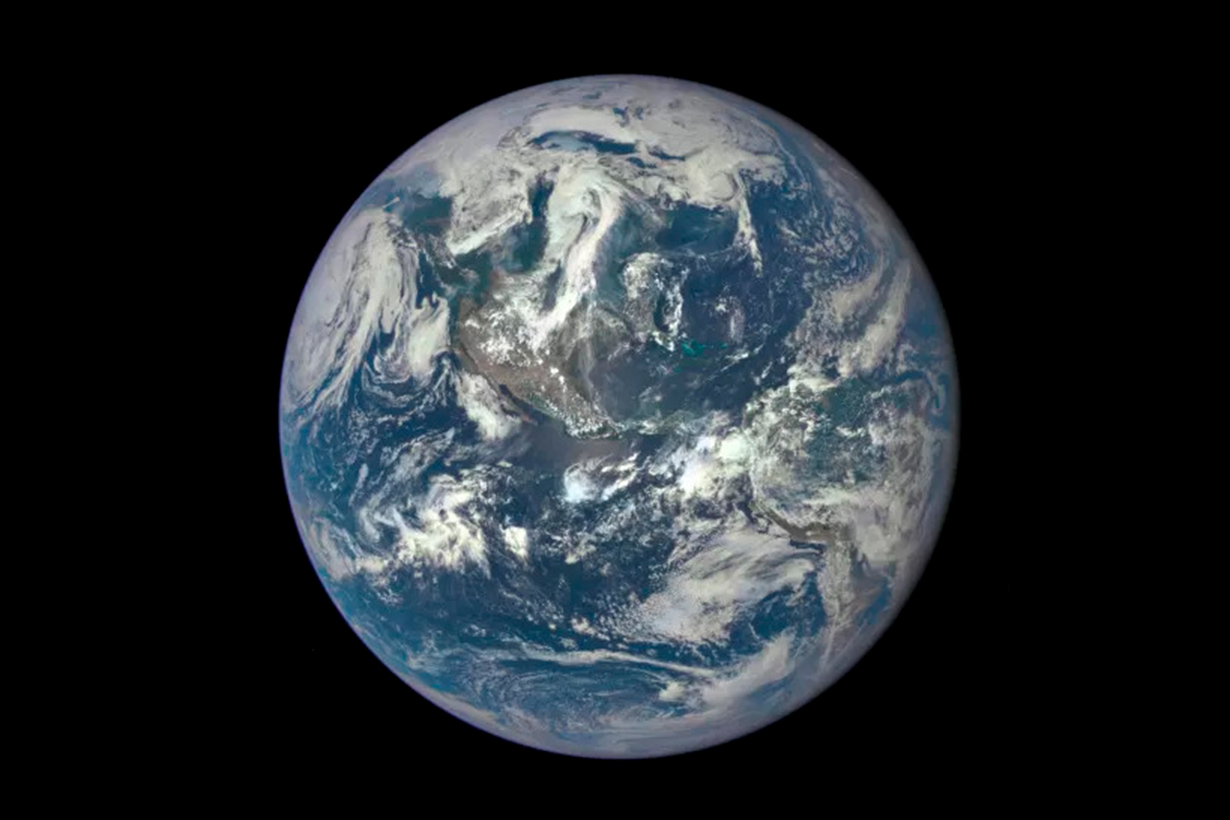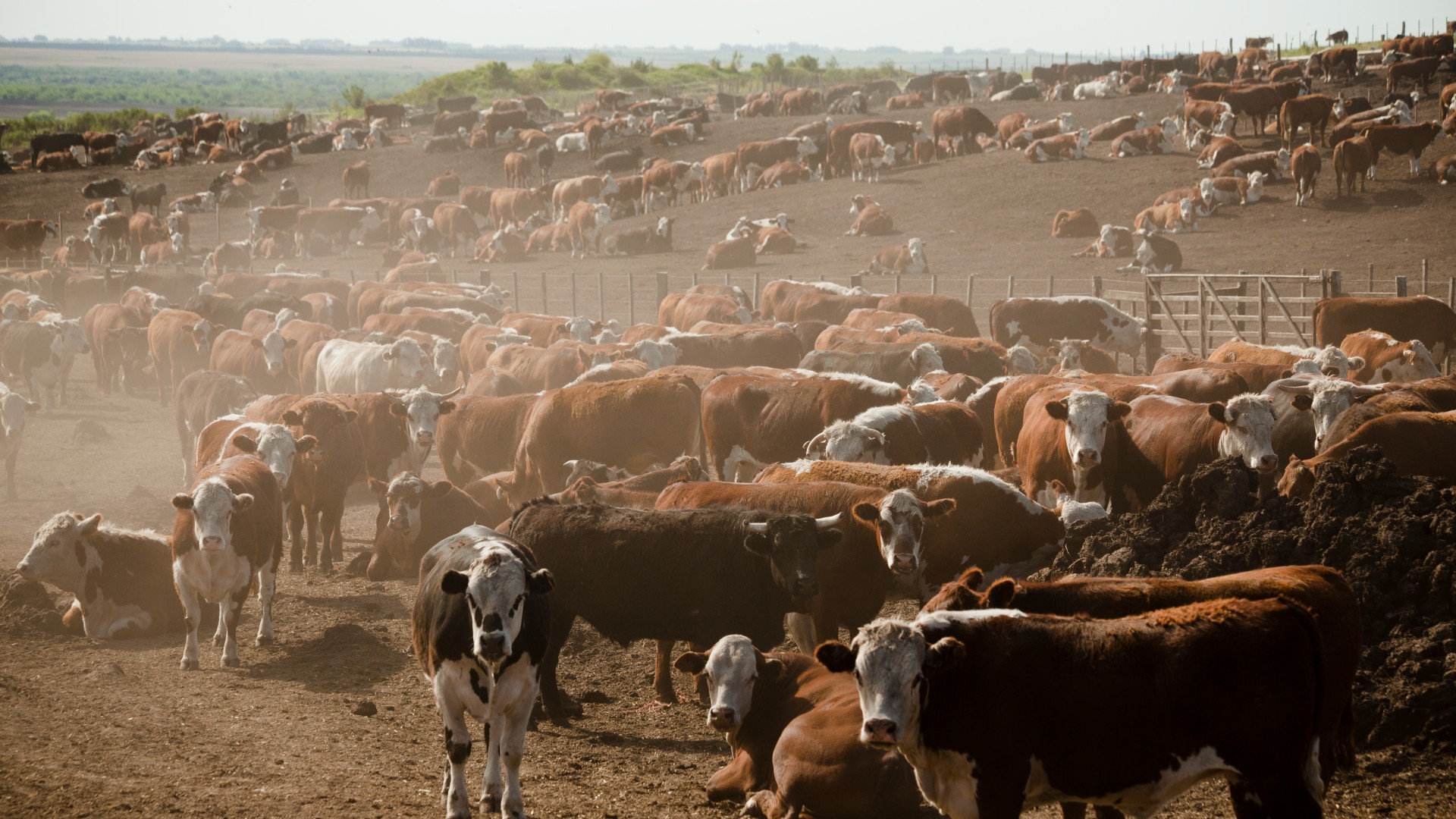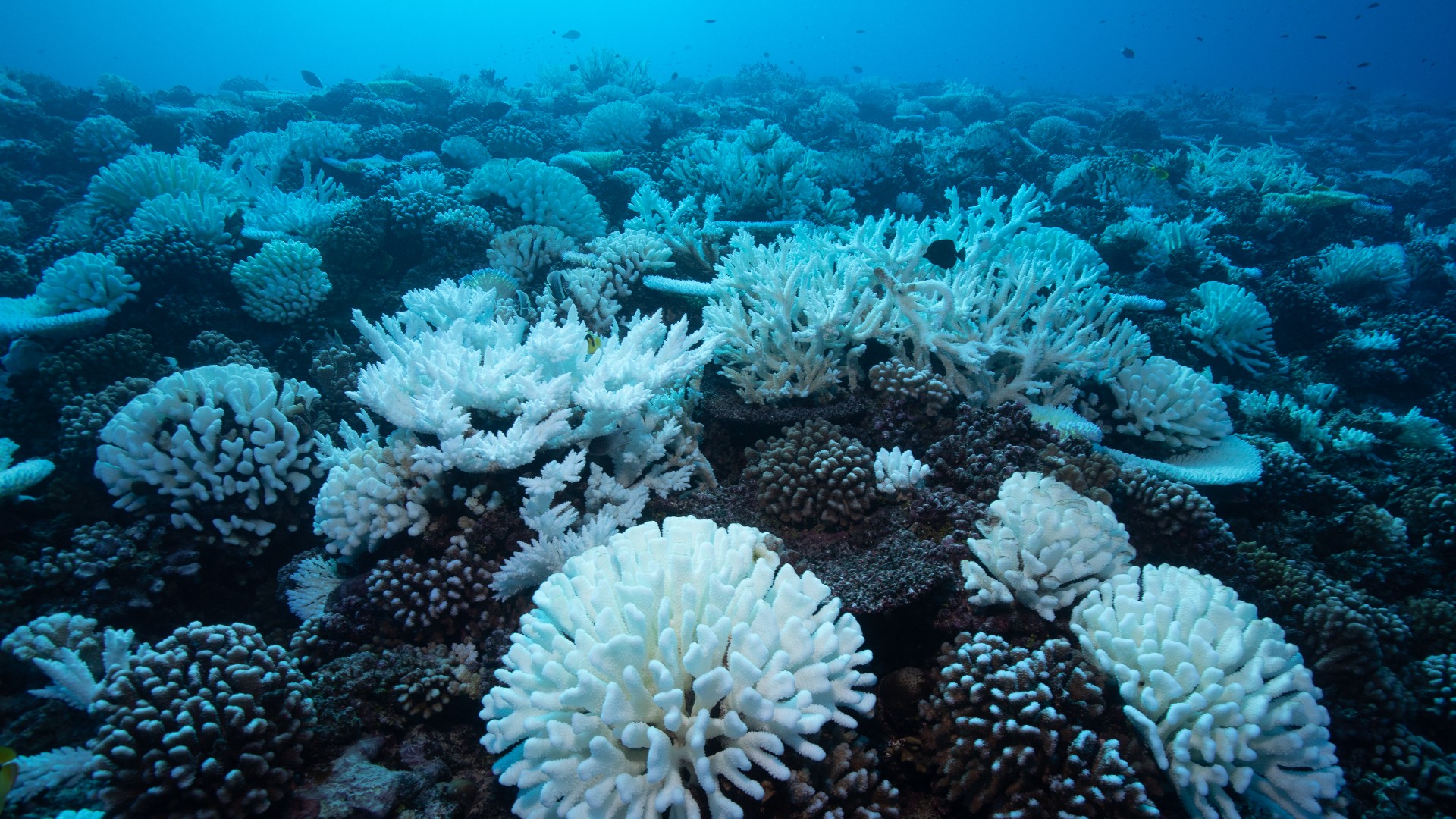CLOSE
About Elements
TANAKA is a leading company in the field of precious metals.
Advanced materials and solutions that support societal progress, the development stories behind them, the voices of engineers, and our management philosophy and vision—
Elements is an online media platform that shares insights that lead to a better society and a more prosperous future for the planet under the slogan “Mastering Precious Metals.”

What is global warming?

Global warming is the rise in average temperatures across the globe, which has been ongoing at least since record keeping began in 1880.
Here are the bare numbers, according to the National Oceanic and Atmospheric Administration (NOAA): Between 1880 and 1980, the global annual temperature increased at a rate of 0.13 degrees Fahrenheit (0.07 degrees Celsius) per decade, on average. Since 1981, the rate of increase has sped up, to 0.32 F (0.18 C) per decade. This has led to an overall 3.6 F (2 C) increase in global average temperature today compared with the preindustrial era. So far, 2016 is the hottest year on record, but that record has been close to falling several times already. The years 2019 and 2020 both came within fractions of degrees of knocking 2016 off its perch. In 2020, the average global temperature over land and ocean was 1.76 F (0.98 C) warmer than the 20th-century average of 57.0 F (13.9 C).
Modern global warming is caused by humans. The burning of fossil fuels has released greenhouse gases into the atmosphere, which trap warmth from the sun and drive up surface and air temperatures. Global warming is a synonym for climate change, though “climate change” has become the preferred term among scientists.
What causes global warming?
The main driver of today’s warming is the combustion of fossil fuels. These hydrocarbons heat up the planet via the greenhouse effect, which is caused by the interaction between Earth’s atmosphere and incoming radiation from the sun.
“The basic physics of the greenhouse effect were figured out more than a hundred years ago by a smart guy using only pencil and paper,” Josef Werne, a professor of geology and environmental science at the University of Pittsburgh, told Live Science.
That “smart guy” was Svante Arrhenius, a Swedish scientist and eventual recipient of a Nobel Prize in chemistry. Simply put, solar radiation hits Earth’s surface and then bounces back toward the atmosphere as heat. Gases in the atmosphere trap this heat, preventing it from escaping into the void of space (good news for life on the planet). In a paper presented in 1895, Arrhenius figured out that greenhouse gases such as carbon dioxide could trap heat close to the Earth‘s surface, and that small changes in the amount of those gases could make a big difference in how much heat is trapped.
How greenhouse gases cause global warming
Since the beginning of the Industrial Revolution, humans have been rapidly changing the balance of gases in the atmosphere. Burning fossil fuels like coal and oil releases water vapor, carbon dioxide (CO2), methane (CH4), ozone and nitrous oxide (N2O), which are considered the primary greenhouse gases. Carbon dioxide is the most common greenhouse gas. Between about 800,000 years ago and the beginning of the Industrial Revolution, CO2’s presence in the atmosphere amounted to about 280 parts per million (ppm, meaning there were about 280 molecules of CO2 in the air per every million air molecules). As of 2020 (the last year when full data are available), the average CO2 in the atmosphere was 412.5 ppm, according to the National Centers for Environmental Information.
That may not sound like much, but according to the Scripps Institution of Oceanography, levels of CO2 haven’t been that high since the Pliocene epoch, from about 5.3 million to 2.6 million years ago. At that time, the Arctic was ice-free for at least part of the year and significantly warmer than it is today, according to 2013 research published in the journal Science.
In 2016, CO2 accounted for 81.6% of all U.S. greenhouse gas emissions, according to an analysis from the Environmental Protection Agency (EPA).
“We know through high-accuracy instrumental measurements that there is an unprecedented increase in CO2 in the atmosphere. We know that CO2 absorbs infrared radiation [heat] and the global mean temperature is increasing,” Keith Peterman, a professor of chemistry at York College of Pennsylvania, and his research partner, Gregory Foy, an associate professor of chemistry at York College of Pennsylvania, told Live Science in a joint email message.
CO2 makes its way into the atmosphere through a variety of routes. Burning fossil fuels releases CO2 and is, by far, the biggest U.S. contribution to emissions that warm the globe. According to the 2018 EPA report, U.S. fossil fuel combustion, including electricity generation, released just over 5.8 billion tons (5.3 billion metric tons) of CO2 into the atmosphere in 2016. Other processes — such as non-energy use of fuels, iron and steel production, cement production and waste incineration — boost the total annual CO2 release in the U.S. to 7 billion tons (6.5 billion metric tons).

Deforestation is also a large contributor to excess CO2 in the atmosphere. In fact, deforestation is the second largest anthropogenic (human-made) source of carbon dioxide, according to the Food and Agriculture Organization of the United Nations. After trees die, they release the carbon they have stored during photosynthesis. The transformation of forest land into ranching, residential or agricultural land also means fewer trees to take up carbon from the atmosphere. According to the UN’s 2020 Global Forest Resources Assessment, about 1,040 acres (420 hectares) of forest have been lost to deforestation since 1990, but the good news is that since 2015, the rate of forest loss has slowed.
Globally, methane is the second most common greenhouse gas, but it is the most efficient at trapping heat. The EPA reports that methane is 25 times more efficient at trapping heat than carbon dioxide. In 2016, the gas accounted for about 10% of all U.S. greenhouse gas emissions, according to the EPA.
Methane can come from many natural sources, but humans cause a large portion of methane emissions through mining, the use of natural gas, the mass raising of livestock and the use of landfills. Cattle constitute the largest single source of methane in the U.S., according to the EPA, with the animals producing nearly 26% of total methane emissions.
What are the effects of global warming?
Global warming doesn’t just mean warming, which is why “climate change” has become the favored term among researchers and policymakers. While the globe is becoming hotter on average, this temperature increase can have paradoxical effects, such as more frequent and severe snowstorms. Climate change can and will affect the globe in several big ways: by melting ice, by drying out already-arid areas, by causing weather extremes and by disrupting the delicate balance of the oceans.
Melting ice
Perhaps the most visible effect of climate change so far is the melting of glaciers and sea ice. The ice sheets have been retreating since the end of the last ice age, about 11,700 years ago, but the last century’s warming has hastened their demise. A 2016 study found that there is a 99% chance that global warming has caused the recent retreat of glaciers; in fact, the research showed, these rivers of ice retreated 10 to 15 times the distance they would have if the climate had stayed stable. Glacier National Park in Montana had 150 glaciers in the late 1800s. As of 2015, when the last full survey was taken, there were 26.. The loss of glaciers can cause the loss of human life, when icy dams holding back glacier lakes destabilize and burst or when avalanches caused by unstable ice bury villages.
At the North Pole, warming is proceeding twice as quickly as it is at middle latitudes, and the sea ice is showing the strain. Fall and winter ice in the Arctic hit record lows in both 2015 and 2016, meaning the ice expanse did not cover as much of the open sea as previously observed. In 2020, summer sea ice hit the second-lowest extent ever recorded, according to the National Snow and Ice Data Center (NSIDC). According to NASA, the 13 smallest values for maximum winter extent of sea ice in the Arctic were all measured in the last 13 years. The ice also forms later in the season and melts more readily in spring. According to the NSIDC, January sea ice extent has declined 3.15% per decade over the past 40 years. Some scientists think the Arctic Ocean will see ice-free summers within 20 or 30 years.
In the Antarctic, the effects of global warming have been more variable.. The Western Antarctic Peninsula is warming faster than anywhere else besides some parts of the Arctic, according to the Antarctic and Southern Ocean Coalition. The peninsula is where the Larsen C ice shelf just broke in July 2017, spawning an iceberg the size of Delaware. Now, scientists say that a quarter of West Antarctica’s ice is in danger of collapse and the enormous Thwaites and Pine Island glaciers are flowing five times faster than they did in 1992. The Thwaites glacier is especially vulnerable because 2021 research suggests it sits over a region where Earth’s crust is relatively thin and geothermal heat can weaken the ice from below.
East Antarctica has long been more resilient to the effects of global warming. But recent data suggests that even this last cold bastion of the southern continent may be feeling the effects of rising temperatures. According to Yale’s Environment360, glaciers in East Antarctica are starting to move faster. That means more land-based ice headed toward the ocean — a major driver of sea level rise.
Heating up
Global warming will change things between the poles, too. Many already-dry areas are expected to get even drier as the world warms. The southwest and central plains of the United States, for example, are expected to experience decades-long “megadroughts” harsher than anything else in human memory.
“The future of drought in western North America is likely to be worse than anybody has experienced in the history of the United States,” Benjamin Cook, a climate scientist at NASA’s Goddard Institute for Space Studies in New York City who published research in 2015 projecting these droughts, told Live Science. “These are droughts that are so far beyond our contemporary experience that they are almost impossible to even think about.”
The study predicted an 85% chance of droughts lasting at least 35 years in the region by 2100. The main driver, the researchers found, is the increasing evaporation of water from hotter and hotter soil. Much of the precipitation that does fall in these arid regions will be lost.
Meanwhile, 2014 research found that many areas will likely see less rainfall as the climate warms. Subtropical regions, including the Mediterranean, the Amazon, Central America and Indonesia, will likely be hardest hit, that study found, while South Africa, Mexico, western Australia and California will also dry out.
Droughts, in turn, can set the stage for devastating wildfires. Many factors go into how many acres are burned each year and how much damage fires do, but according to National Interagency Fire Center data, there has been a steady increase in the extent of wildfires since the 1980s. The top 10 years of acreage burned have all occurred since 2005.
Extreme weather
Another impact of global warming: extreme weather. Hurricanes and typhoons are expected to become more intense as the planet warms. Hotter oceans evaporate more moisture, which is the engine that drives these storms. The U.N Intergovernmental Panel on Climate Change (IPCC) predicts that even if the world diversifies its energy sources and transitions to a less fossil-fuel-intensive economy (known as the A1B scenario), tropical cyclones are likely to be up to 11% more intense on average. That means more wind and water damage on vulnerable coastlines.
Paradoxically, climate change may also cause more frequent extreme snowstorms. According to the National Centers for Environmental Information, extreme snowstorms in the eastern United States have become twice as common as they were in the early 1900s. Here again, this change comes because warming ocean temperatures lead to increased evaporation of moisture into the atmosphere. This moisture powers storms that hit the continental United States.
Ocean disruption
RELATED CONTENT
—8 ominous climate milestones reached in 2021
—When did scientists first warn humanity about climate change?
—Could climate change make humans go extinct?
Some of the most immediate impacts of global warming are beneath the waves. Oceans act as carbon sinks, which means they absorb dissolved carbon dioxide. That’s not a bad thing for the atmosphere, but it isn’t great for the marine ecosystem. When carbon dioxide reacts with seawater, the pH of the water declines (that is, it becomes more acidic), a process known as ocean acidification. This increased acidity eats away at the calcium carbonate shells and skeletons that many ocean organisms depend on for survival. These creatures include shellfish, pteropods and corals, according to NOAA.
Corals, in particular, are the canary in a coal mine for climate change in the oceans. Marine scientists have observed alarming levels of coral bleaching, events in which coral expel the symbiotic algae that provide the coral with nutrients and give them their vivid colors. Bleaching occurs when corals are stressed, and stressors can include high temperatures. In 2016 and 2017, Australia’s Great Barrier Reef experienced back-to-back bleaching events. Coral can survive bleaching, but repeated bleaching events make survival less and less likely.

Global warming fast facts
- Carbon dioxide levels in the atmosphere are at 417 ppm in 2021, their highest levels in 650,000 years.
- Average global temperature has increased by 1.9 F (3.4 C) since 1880.
- The minimum expanse of Arctic summer sea ice has declined 13% per decade since satellite measurements began, in 1979.
- Land ice has declined at the poles by 428 gigatons a year since 2002.
- Global sea level has risen 7 inches (178 millimeters) in the past century.
Further resources on global warming
For up-to-date news and data on global warming, visit Climate.gov, a repository of information provided by NOAA. The National Centers for Environmental Information provides a monthly “state of the climate” report tracking trends within the U.S. and globally. For answers to frequently asked questions about global warming, visit NASA’s Global Climate Change page.
For a truly deep dive into the science, modeling and predictions surrounding global warming, read the Intergovernmental Panel on Climate Change Sixth Assessment report. The IPCC website also hosts fact sheets and outreach materials designed for the general public.
Bibliography
Hayhoe, Katherine. “Saving Us: A Climate Scientist’s Case for Hope and Healing in a Divided World.” Simon & Schuster. September 2021.
Mann, Michael. “The New Climate War: The Fight to Take Back Our Planet.” PublicAffairs. January 2021.
U.S. Environmental Protection Agency. “Climate Change.” Jan. 14, 2022. https://www.epa.gov/climate-change
This article was written by Stephanie Pappas from Live Science and was legally licensed through the Industry Dive Content Marketplace. Please direct all licensing questions to legal@industrydive.com.
![]()







